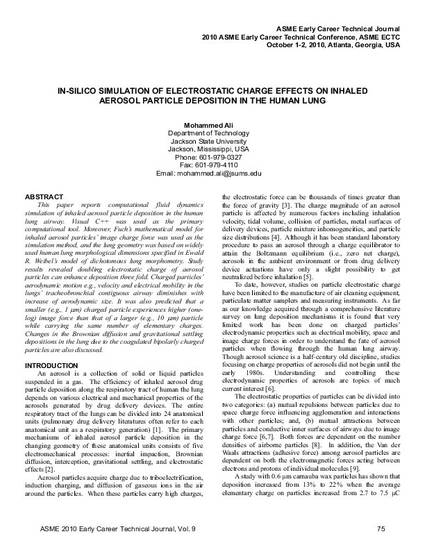
Article
In-silico simulation of electrostatic charge effects on inhaled aerosol particle deposition in the human lung
ASME Early Career Technical Journal
(2010)
Abstract
This paper reports computational fluid dynamics simulation of inhaled aerosol particle deposition in the human lung airway. Visual C++ was used as the primary computational tool. Moreover, Fuch’s mathematical model for inhaled aerosol particles’ image charge force was used as the simulation method, and the lung geometry was based on widely used human lung morphological dimensions specified in Ewald R. Weibel’s model of dichotomous lung morphometry. Study results revealed doubling electrostatic charge of aerosol particles can enhance deposition three fold. Charged particles’ aerodynamic motion e.g., velocity and electrical mobility in the lungs’ tracheobronchial contiguous airway diminishes with increase of aerodynamic size. It was also predicted that a smaller (e.g., 1 m) charged particle experiences higher (onelog) image force than that of a larger (e.g., 10 m) particle while carrying the same number of elementary charges. Changes in the Brownian diffusion and gravitational settling depositions in the lung due to the coagulated bipolarly charged particles are also discussed.
Keywords
- In-Silico Simulation,
- Electrostatic Charge,
- Inhaled Aersol Particle Deposition,
- Human Lung
Disciplines
Publication Date
October, 2010
Citation Information
Mohammed Ali. "In-silico simulation of electrostatic charge effects on inhaled aerosol particle deposition in the human lung" ASME Early Career Technical Journal Vol. 9 Iss. 2 (2010) p. 75 - 79 Available at: http://works.bepress.com/mohammedali/11/
